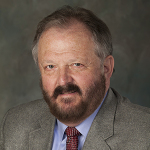When the Centers for Medicare & Medicaid Services (CMS) issued its most recent guidelines for medical equipment maintenance in December 2013, and The Joint Commission subsequently updated its standards in turn, HTM professionals were faced with two challenges. The first and most immediate is finding ways to comply with what many feel are restrictive and costly requirements to follow manufacturer’s maintenance recommendations in most cases. The second, longer-term challenge, is finding the necessary evidence to persuade CMS to adopt a more optimal approach.
These challenges will be the focus of a June 7 session at the upcoming AAMI annual conference. The hour-long event will be led by three experts in the subject: Stephen L. Grimes, FACCE, FHIMSS, FAIMBE, ABM Healthcare Support Services; Malcolm Ridgway, PhD, CCE, Clinical Engineering Consultant; and Arif Subhan, CCE, FACCE, VA Greater Los Angeles Healthcare System.
Among the compliance subjects the speakers will discuss are new approaches to equipment inventory, the definition of “high-risk medical equipment,” when an alternative equipment maintenance strategy should be used, and how to implement and document compliance actions.
In addition, the panelists will tackle the bigger issue of building a consensus for how to revise CMS guidelines. Although the new standards call for a risk-based approach, Subhan says, the agency “imposed a fairly substantial set of ‘guardrails’ in the form of a substantial number of device types that must be maintained according to the manufacturer’s recommendations—irrespective of the findings of the risk analysis.” The current CMS standards, he adds, are “not a resounding vote of confidence in the traditional (Fennigkoh-Smith) risk-based approach being widely used at the moment by the HTM community.”
For that reason, Subhan explains, a key aim of the presentation will be to “address what we can do to create a more scientific, evidence-based type of risk analysis that might have a chance of reestablishing our credibility as competent managers of equipment-related patient safety.”
The panelists’ ultimate goal, says Ridgway, is “to standardize on the way we collect data” in two respects. The first, he says, is “the frequency with which potentially critical devices fail because a nondurable part was not restored properly or in a timely manner.” The second is “the frequency with which we find hidden performance or safety failures during PM testing.”
Once the community has collected sufficient data, he says, “we will have some hard evidence on which specific devices are in fact potentially hazardous (and which should therefore be listed as “high-risk” devices).” In the meantime, however, “we will have to use ‘expert judgments’ on which device types we anticipate falling into the high-risk category.” Therefore, he explains, “part of the presentation will be about using this more scientific approach to risk assessment rather than the more subjective Fennigkoh-Smith type approach. There are also some very interesting bonuses that fall out from collecting this data in this way.”
Ridgway believes this new approach will pay long-term dividends in changing the CMS guidelines. “Although we will initially have to comply with the regulatory ‘guardrails,’ it is hoped that we will be able to go back to the CMS bargaining table with hard data to support our (proposed) scientific, evidence-based approach…. With some luck in persuading some of the larger maintenance organizations and some of the CMMS vendors to collaborate, it should not take us too long to fill up our database.”
Subhan warns against “looking for a quick fix or a ‘guaranteed’ way of achieving compliance with the standards.” Because the topic is “a fairly complicated and controversial issue,” he explains, understanding the challenges and building a consensus “may take some time.”
The session will take place at the AAMI Conference & Expo on Sunday, June 7, from 2:00 to 3:00 pm. For more information on the conference, visit the AAMI Conference website.
John Bethune is editorial director of 24×7. Contact him at [email protected].







We will release at AAMI a comprehensive Ultrasound PM plan. It takes every manufacturer’s requirements and applies the most rigorous standards. The resulting SINGLE PM procedure and interval meets or exceeds ALL MANUFACTURER’s and CMS’ requirements. It seem to be the only way to deal with the 70+ models in use today.